Shadow of Mordor Review: Is it Worth Playing Now?
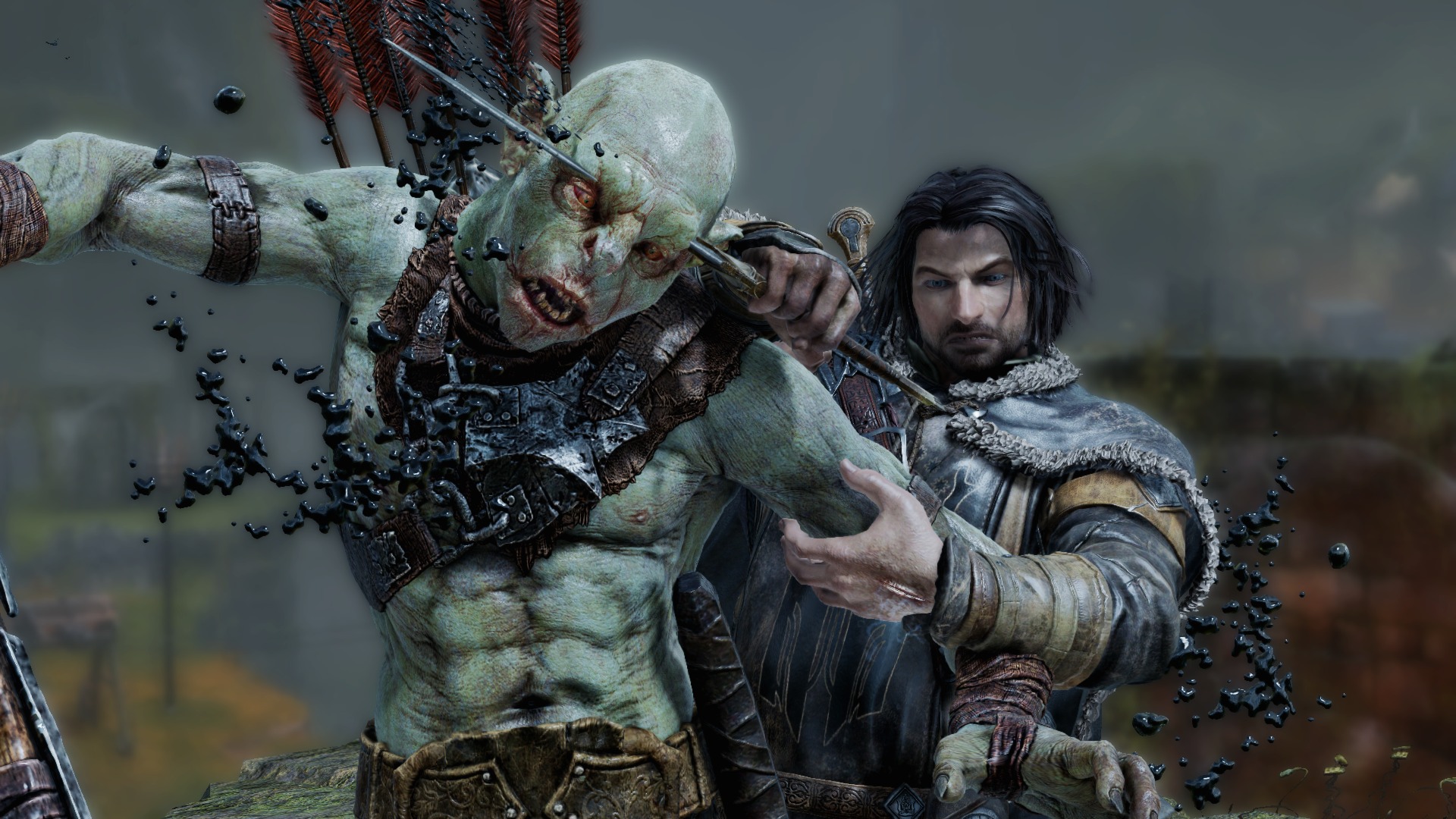
Shadow of Mordor is an open-world adventure set in Tolkien’s Middle Earth that sees you take control of exiled ranger Talion, who has his wife and child brutally murdered in front of him by Sauron’s troops.
The twist is that Talion is also killed, but finds himself both reborn after the fact, and that he’s been semi-possessed by the spirit of an elf who also seems as perplexed as he is as to how it’s all happened.
You then set off on an adventure across Mordor, to discover what’s caused your purgatorial existence and to avenge your family’s slaughter while you’re at it.
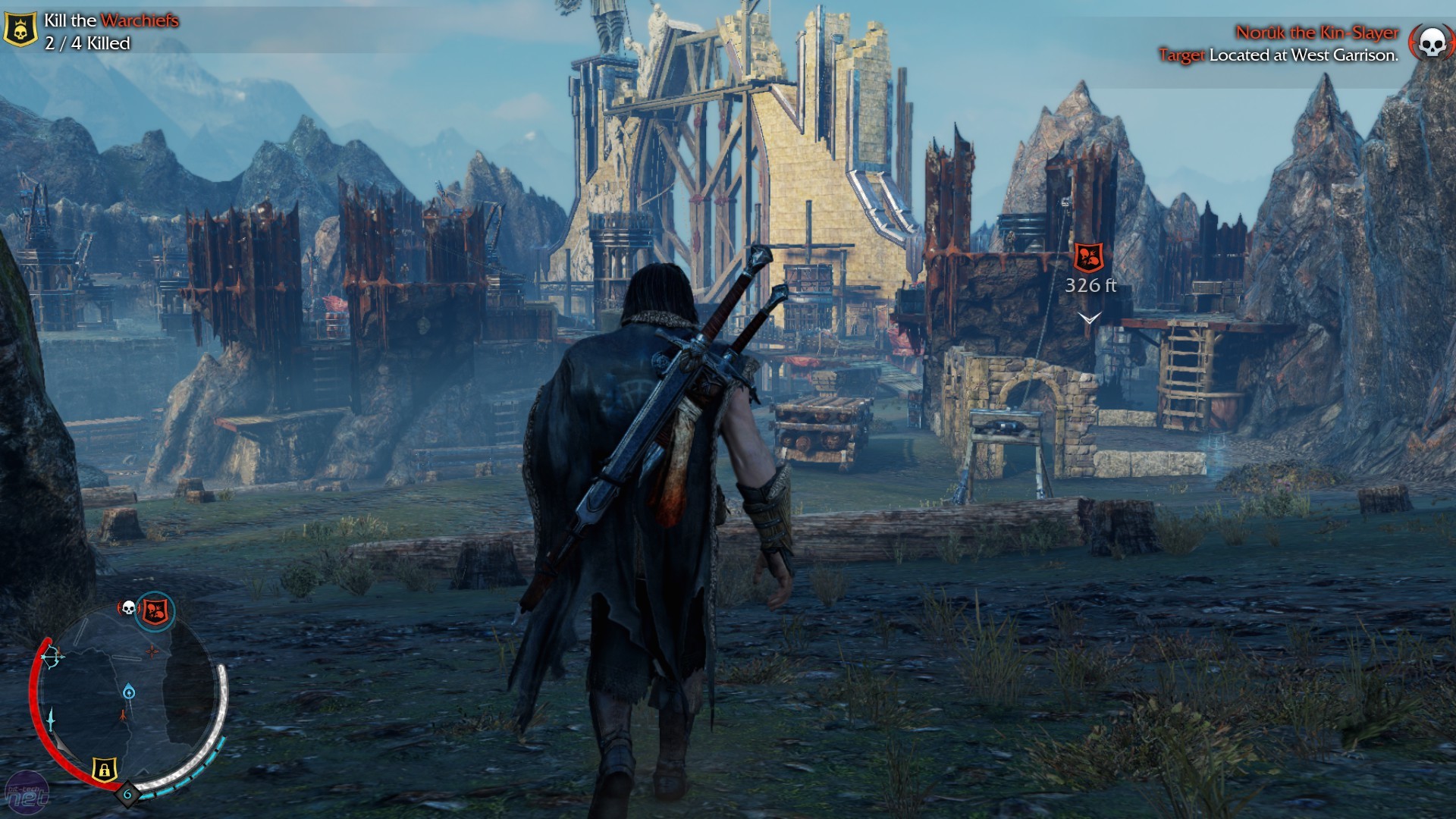
The Good
Nemesis: Orcs are the main enemy type in the game, scattered all over the map in little gangs. What really differentiates the game from other open-world third-person adventures is the unique ‘Nemesis system’ it applies to these enemies.
Get killed by an orc, he’ll get promoted to Captain and get stronger as a result. When you then face him again, he’ll remember killing you, and probably mock you for it. It gets much more complicated than this too, with each orc having their own strengths and weaknesses, some being immune to certain types of attack. The orcs will also fight amongst themselves when you aren’t around, and the game gives you a nice regular update as to the ranks of Sauron’s Army as it evolves.
This is great as it augments everything you do in the game and makes things far more interesting, and you’ll grow to hate and love random enemies in a way no other game can provide. Once I gained the ability to take command of my own orcs, things got really interesting, as setting them upon each other reveals the real meat of the game – orc politics. Extremely addictive.
Shadow of Tutor: SoM has one of the best tutorial segments I’ve ever come across. It manages in just a few minutes to serve as a set-up for the story, provide the characters with motivations, and teach the player the basics of the controls. It’s a textbook example of how to do tutorials well.
Graphics: SoM is one of the earlier games of the latest generation, but it still looks great, with the mountainous backgrounds and the character models notable standouts. The orcs themselves look fantastic, which looks even more impressive when there are lots of them on-screen at once, which happens fairly regularly. It’s one of the few games I’ve played where the standard enemy models seem to have more detail than that of the main protagonist.
Orc-haracters: Speaking of the orcs (Uruk-ai…whatever), the sheer variety of their personalities and looks is impressive. They differ not just visually – I rarely heard a repeated line from any of my rivals as they taunted and threatened me, there’s seemingly hundreds of lines of dialogue in the game. There seems to be a lot of different voice actors for them too, which adds to the spice of it all.
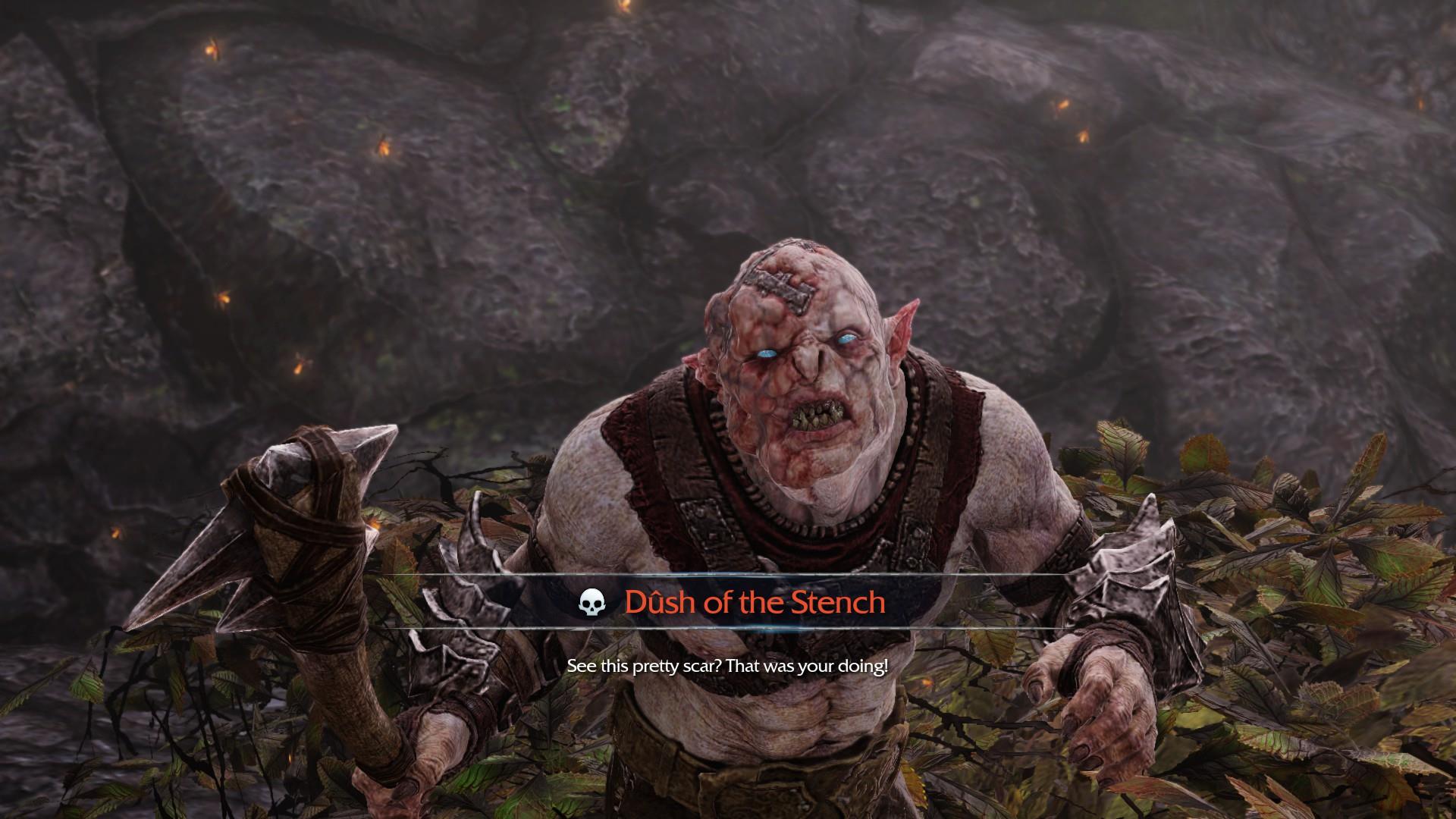
The Power we are Dealing with is Immeasurable: Most games are power-fantasies, but few make you actually feel like a true force in the game world, and fewer still provide an in-game reason as to why you’re essentially invulnerable. Shadow of Mordor’s clever resurrection mechanic means the game’s characters actually acknowledge that your character is continuously dying and reborn, which serves to enhance the enjoyment of the game. It’s great when you run into an orc that killed you earlier, and they remark on how you’re back and they’ll have to kill you again; with some going as far as to comment on the existential futility of it all. This is the first game I can remember playing that actually gives an explanation as to why the player has ‘lives’, and it deserves credit for it.
Plenty to do: Open-world games often suffer from feeling barren. As wide as an ocean, but as shallow as a puddle. Fortunately, Monolith have packed Mordor with things to do other than progressing the main storyline, many of which don’t rely on the Nemesis system either. You’ve got hidden Ithildin, hunting challenges, orc feasts to invade, hunts to interrupt, clashes, recruiting, legends, and slaves that need freeing, all on top of actual story. There’s a lot of variety and you’ll rarely find yourself bored.
I Am Legend: Another really nice touch is the ‘Legendary Weapon’ missions, where you do tasks with your three weapons (sword, dagger and bow) in order to develop the legend of each. It gives a really nice feeling that you’re part of a story that will be told in future, and it’s a clever way to develop abilities – in the form of runes – for each weapon. Again, the game is making the effort to provide an in-universe explanation for a common game mechanic like levelling up, which other games don’t bother with. And the experience is all the richer for it.
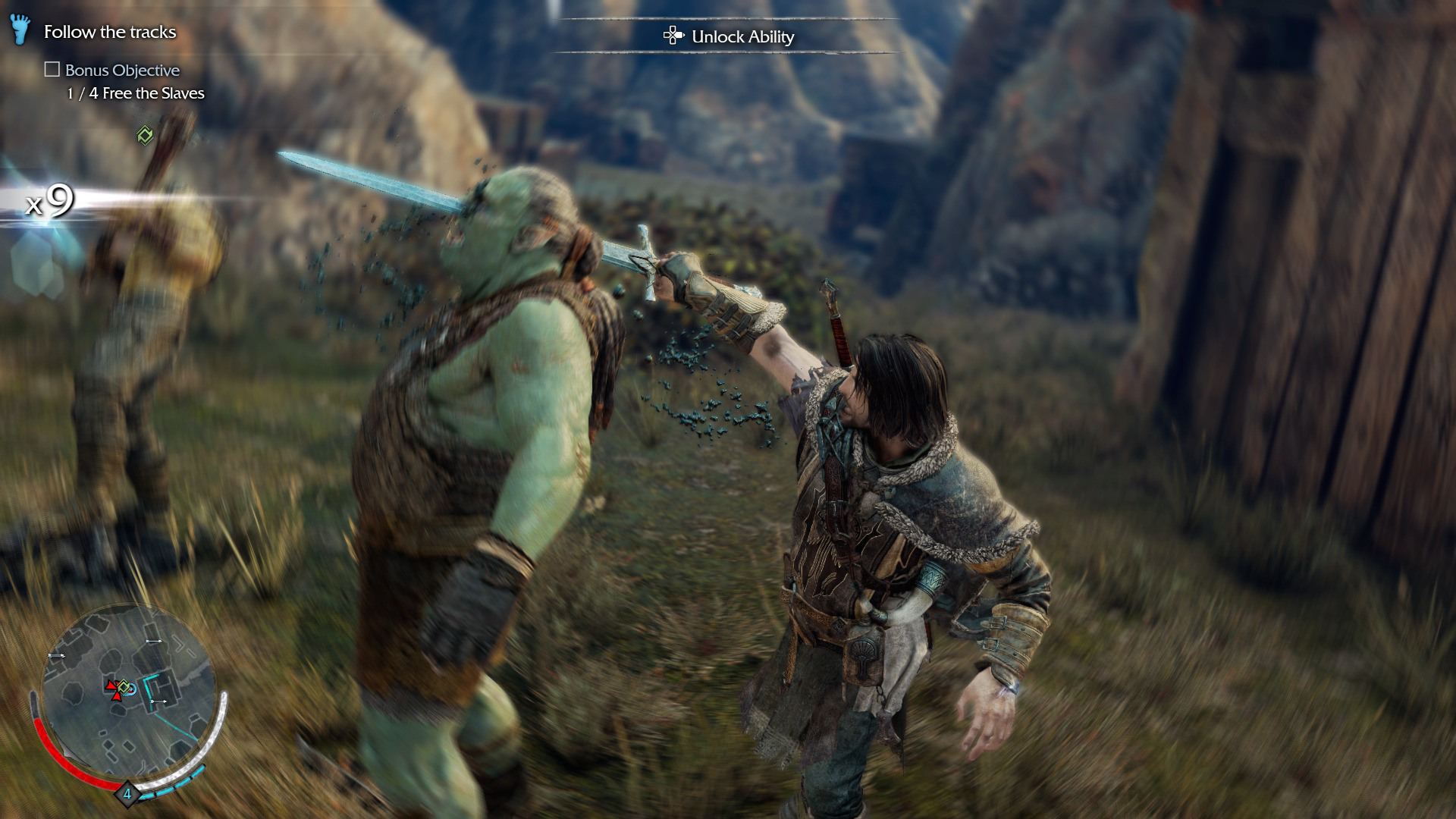
Perfect density: Tying into the point above, a lot of overworlds in games feel like they’ve just expanded the space for the sake of adding in extra square miles. Even hallmarks of the genre like GTA can sometimes feel like this.
The Mordor of this game isn’t massive, and as a result feels extremely dense – you can barely run 20 feet without running into a camp or some crumbling ruins, which means getting from one place to another never feels like a chore. Talion can also ‘sprint’ forever, which is a welcome addition to the gameplay – and even if this is too slow for your tastes, you can always hijack a caragor to speed things up further.
Greenery: Something I was apprehensive about going in was the lack of ‘nice’ locations I’d get to play in. Mordor is notoriously grim and dark if the films are anything to go by – Sauron isn’t known for his love of lush greenery and flowerbeds.
Thankfully, the second large area you open up, Nurn, is just lovely. With nice green fields and a gorgeous coastline, Nurn provides much-needed juxtaposition to the first dark, moody area.
Mission Restart? No problem: It’s a minor thing but certainly worth mentioning. Mordor handles its missions in the same way most open-world games do, by having the player reach a marker and ‘triggering’ it, which then starts the mission. In some games, if a mission is failed, you’re taken back to that marker and forced to start all over again, regardless of how long the mission is and how much time you may have spent on it. Mordor avoids this issue by sensible segmenting of each mission into mini-sections, meaning that if you die you’ll just be taken back to the start of that section, rather than the whole mission. It’s a welcome touch.
Assassin’s Arkham: SoM borrows from two game series rather heavily: Assassins Creed and the Batman Arkham games. It takes its climbing mechanics from AC, making it easy to parkour your way over crumbling Cathedrals and orc hideouts, and it’s implemented in a way that actually feels better than the games in the AC series. The game’s combat is essentially Batman – meaning it’s simple but satisfying, and integrates well with Talion’s abilities and the Orcs’ behaviour.
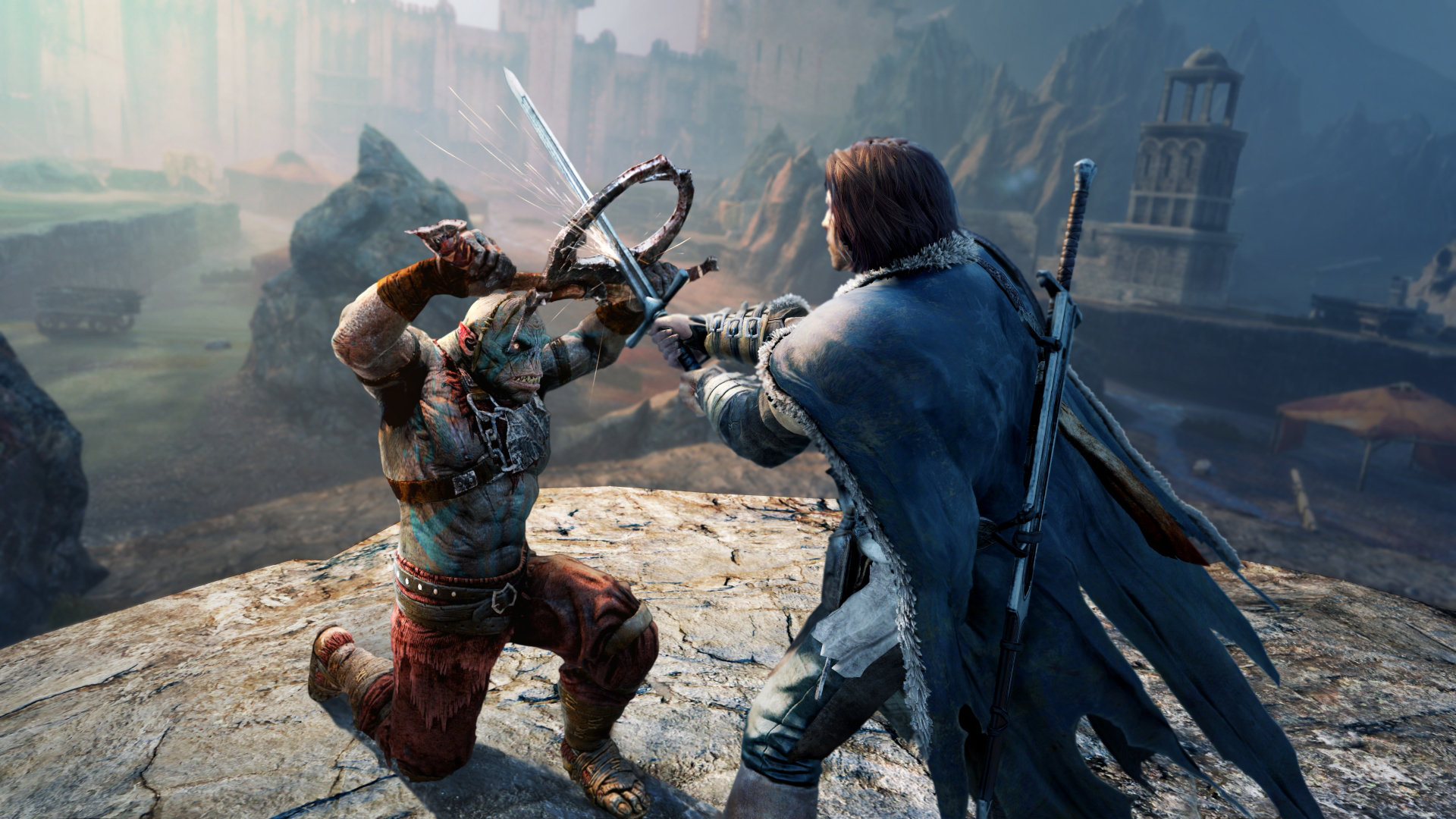
The Mixed
Taragorn: Talion is… basically Aragorn. Everything from his rugged looks to his sombre but noble personality to his occupation screams Strider. When enemies are calling you ‘Ranger’ you know who Monolith probably had in mind when they initially designed Talion. It’s a shame the designers didn’t do more to differentiate the two characters, but Aaragorn is such a badass template anyway it doesn’t really matter.
Alternative facts: Personally I didn’t mind, but die-hard LotR fans might find it a bit disappointing that some of the games plot is at odds with the strict lore of Tolkien’s universe.
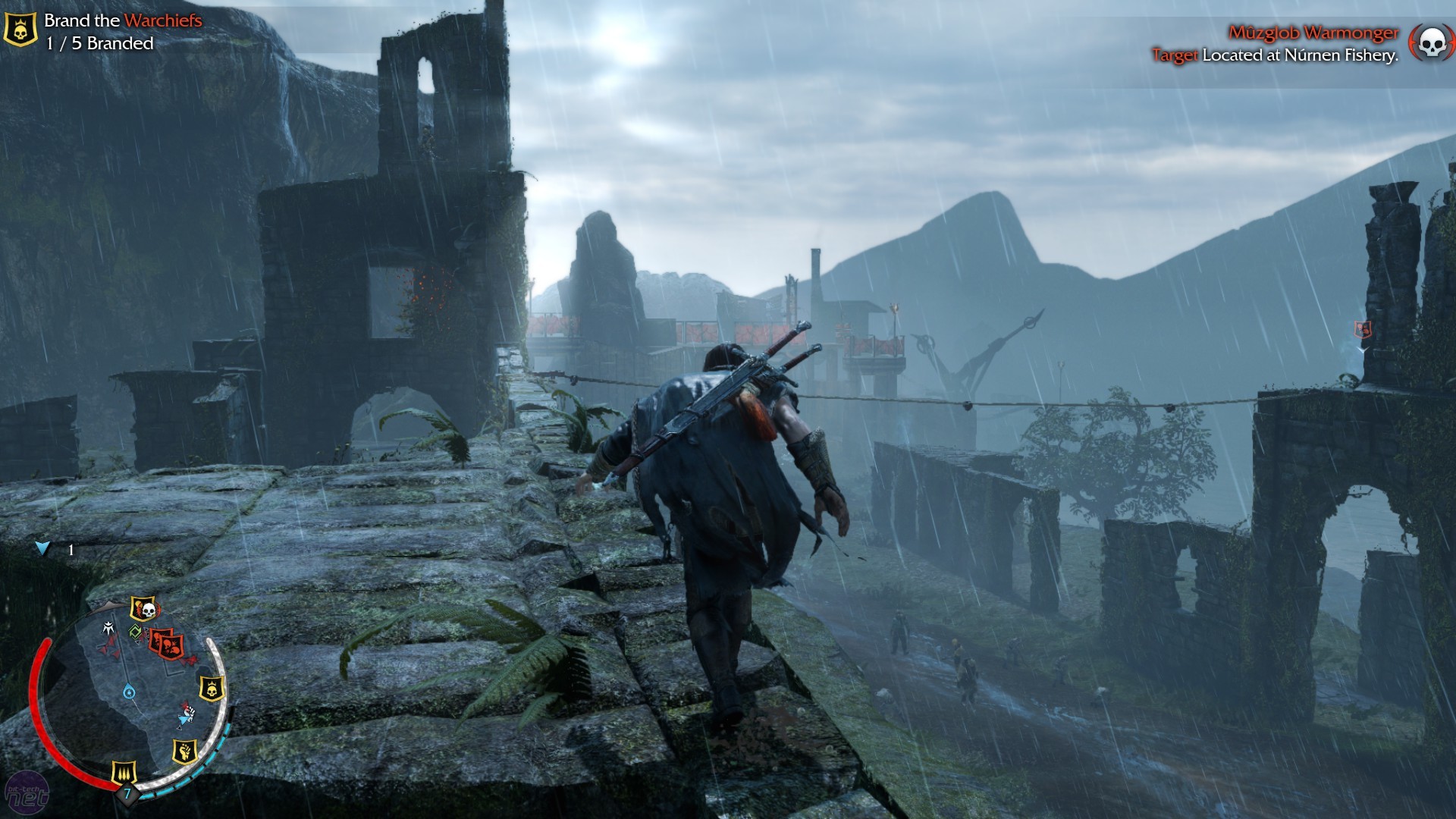
The Bad
Personal Space Talion…: The biggest problem with the game is the lack of an option to change the camera. It behaves just fine for actual gameplay, but you can’t zoom out! I want to admire the scenery without Talion taking up half the damn screen. A real oversight.
Marauder’s Map: Some things on SoM’s map are very welcome, like the location of your servants and your enemies, and mission markers. What seems a bit pointless though are the markers for ‘hidden’ items like health and Ithildin – where’s the challenge in finding collectibles if they’re all marked on the map? An odd decision.
The Power we are dealing with… : As much of a joy as demolishing orcs is, there does come a point where, once you’ve levelled up enough and have the branding ability, the challenge does become a bit trivial. There’s a real sweet spot around 2/3 of the way in where the Warchiefs are very challenging but still beatable, and this is when the game is at its best. Orcs are limited however to level 20, which doesn’t seem enough in light of how powerful you eventually become.
Creature discomfort: For me, the creature-control just wasn’t that fun or satisfying, and I found myself avoiding creatures altogether.
Overall
I’d recommend Shadow of Mordor to anyone. Even if you aren’t a fan of LotR you’ll find a lot to love here, with a set of solid open-world mechanics enriched by the fantastic Nemesis system, I found myself yearning to come back to the game whenever I wasn’t playing it. Once you’re done with it you’ll feel done with it – but whilst you’re playing it’s a hell of a ride through Mordor.
Score: 8/10
Shadow of Mordor can be bought here from Amazon.